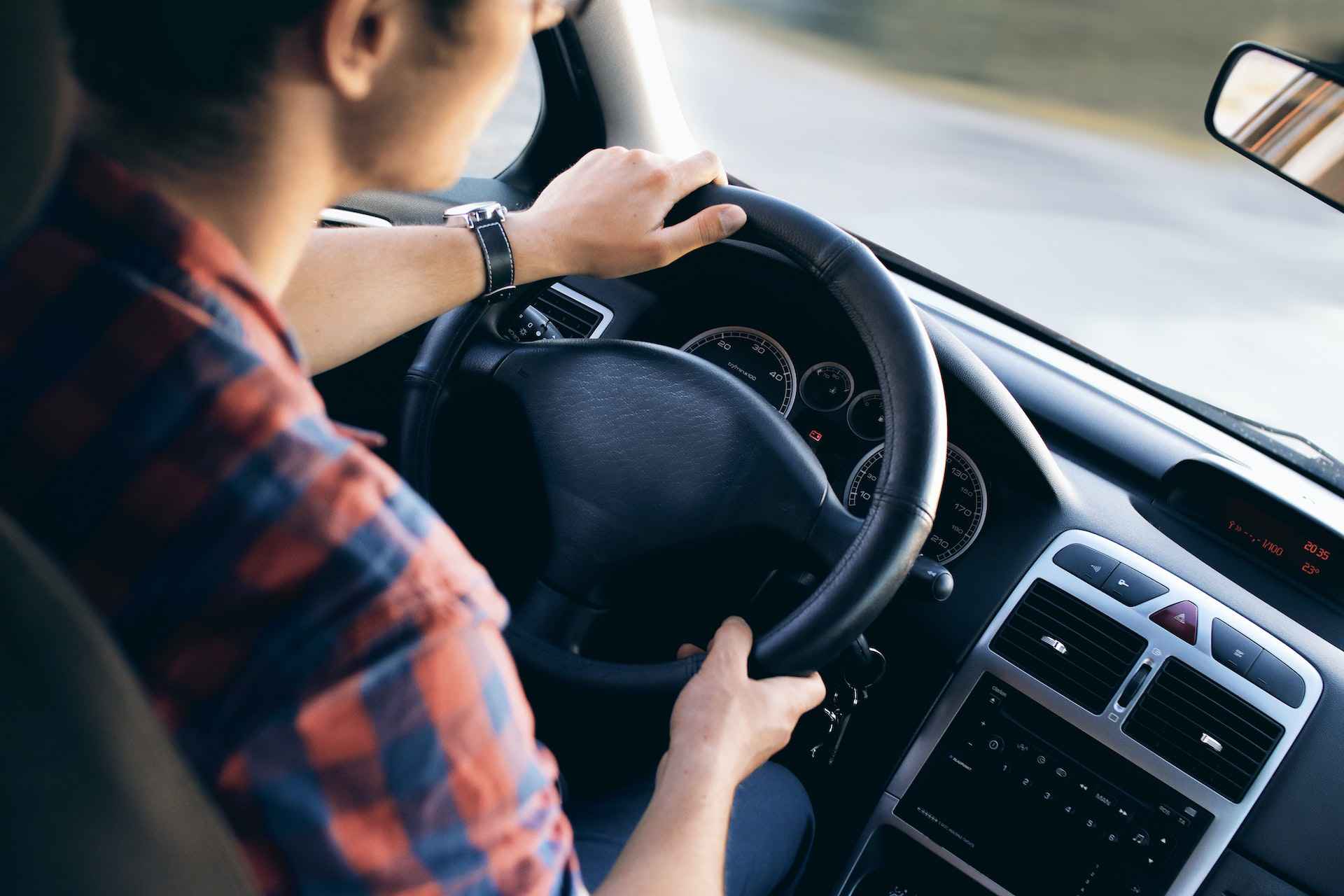- Our Firm
- Personal Injury
-
-
-
Personal Injury Lawyers
-
-
-
-
-
-
Injured in an accident? At Diamond & Diamond, our team of lawyers rely on their reputation in the field and extensive experience in personal injury to provide clients with a dedicated support system over the duration of their case.
-
-
-
-
-
HAVE YOU RECENTLY BEEN INJURED IN AN ACCIDENT?
-
-
-
- Corporate
- Class Action

Driving Safe, Driving Smart: Tips for Reducing Crash Injuries
Car crashes can lead to severe injuries and even death. The number of motor vehicle fatalities in Canada increased by 1.3% from 1,746 in 2020 to 1,768 in 2021. Statistics show that this problem remains unresolved, making Canadian roads dangerous for drivers and pedestrians.
However, drivers behind the wheel can take precautionary road safety measures so they don’t injure themselves or others. In this short guide, we outline tips for drivers so they’d know how to prevent motor vehicle crashes while on the road.
|
Key Takeaways
|
Car Crash Injuries in Canada
The World Health Organization (WHO) published a report about road traffic injuries in 2022. It showed that 93% of car crash fatalities occur in low- and middle-income nations, with the most vulnerable being pedestrians, cyclists, and motorcyclists.
Injuries sustained from road traffic accidents are the leading cause of death for young children and adults aged 5 to 29. Moreover, roughly 1.3 million people die yearly, while up to 50 million suffer non-fatal injuries or disabilities because of road accidents.
According to the WHO, these injuries cause significant economic losses to injured victims, their families, and nations. In fact, road accidents cost most countries roughly 3% of their gross domestic product (GDP).
Canada saw a slight increase in fatalities and severe injuries from car crashes in 2021. Data from the 2021 Canadian Motor Vehicle Traffic Collision Statistics show that car crash fatalities increased by 1.3% while serious injuries rose by 4%.
Moreover, car crash-related injuries increased by 3.6% from 104,286 in 2020 to 108,018 in 2021.
The report also showed that the government’s traffic safety enforcement efforts were not in vain. In 2021, the percentage of drivers who died or got hurt because they weren’t wearing seatbelts dropped by 14%.
The country’s National Collision Database (NCDB) records car collisions from all provinces and territories. The federal, provincial, and territorial governments work hard to improve road safety to reduce fatalities and car crash injuries.
Major Causes of Car Accidents

Investigating the cause of a car accident remains a crucial step in determining who was at fault. Most car accidents are preventable, which means that driver error causes most of them. However, specific factors can cause accidents and affect the process of proving liability.
Aside from helping the investigation, determining the cause can also encourage drivers to be more careful on the road and prevent another accident from occurring. If you know what caused your accident, you can take precautions to make sure that you and others on the road are safe.
Distracted driving
Distracted driving is a form of negligence that remains a significant cause of car crashes in the country. This dangerous driving habit can take many forms, from simply not paying attention to the road to disregarding traffic lights and regulations.
Anything that takes the driver’s attention away from driving can be a distraction, including the following:
- Talking to a friend on the phone
- Sending a text message
- Using a navigation system
- Reading
- Putting on makeup
- Daydreaming
- Eating or drinking
Making a call or sending text messages while operating a vehicle is a significant risk to drivers, passengers, and fellow road users. It takes the driver’s attention away from the road and toward reading an incoming text or email.
While the driver is texting, they could rear-end the car in front of them or swerve out of their lane and into oncoming traffic.
According to the National Highway Traffic Safety Administration, distracted driving, which caused more than 3,500 deaths in 2021 in the US, remains an unresolved problem.
Impaired driving
Impaired driving is a significant public health issue and one of Canada’s leading criminal causes of injury and death.
However, changes to legislation and increased awareness have led to a reduction in impaired driving cases. Under section 320.14(1) of the Criminal Code, impaired driving is defined as driving with high levels of alcohol, drugs, or a combination of the two.
Consuming tetrahydrocannabinol (THC), which is a cannabis compound, or other impairing substances within two hours of driving is also an offence. Canadians are also prohibited from driving if their blood alcohol concentration is more than or equal to 80 mg of alcohol in every 100 ml of blood.
Alcohol-impaired driving is a serious offence because it puts the lives of people on the road in danger and increases the risk of an accident that may result in severe injuries and death. Therefore, drivers must ensure they’re not under the influence of drugs or alcohol before they get behind the wheel.
Speeding
Drivers who exceed the speed limit are responsible for several car accidents resulting in deaths. In 2021, speeding contributed to 24.7% of fatal car crashes in Canada.
Speeding is generally considered an aggressive driving habit. The following are other examples of aggressive driving:
- Cutting off other drivers
- Stopping the car on a pedestrian crosswalk at an intersection
- Passing too close to cyclists
- Speeding up to get in front of another car and then slowing down
- Tailgating or following another vehicle too closely
- Honking repeatedly for no reason
- Refusing to yield the right of way
- Ignoring red lights
- Weaving through traffic carelessly
- Excessive lane changes
Another important reason why speeding is dangerous is that the faster you drive, there is a higher risk that an accident will cause death or severe injuries. This endangers the lives of everyone on the road.
Remember that the laws of physics behind speeding affect all drivers similarly. Moving fast increases the time and distance it takes to stop. It also reduces the driver’s field of vision, making it harder for them to react quickly to emergencies on the road, which can cause accidents.
Fatigued driving
Feeling tired or sleepy is something that some drivers may have experienced. Remember that driving while tired can be as harmful as driving under the influence of drugs or alcohol. It can compromise a driver’s reaction time, decision-making ability, and speed of thought.
If you’re tired while driving, you should find a safe place to stop where you can rest. Drivers must look out for the following signs:
- Heavy eyes
- Yawning frequently
- Blinking repeatedly
- Vision going out of focus
- Closing eyes
- Unfocused thinking
- Unintentional changes in speed
- Reduced braking reaction
- Can’t remember the last few kilometres driven
- Weaving out of your lane unintentionally
Drivers who spend late hours behind the wheel should take breaks to lower the risk of fatigue-related car crashes.
Faulty vehicles or parts
While negligent drivers generally cause car accidents, external factors, such as faulty vehicles or parts, can also lead to collisions. Drivers must take care of their cars to be safe. Young drivers who are new car owners must be especially mindful of this.
If investigators find that your car had bald tires or bad breaks that caused the accident, you may be held liable. Remember that your responsibility as a car owner is to make sure that your vehicle is safe and that it’s not a risk to others on the road.
Safe vehicles are very important in preventing accidents and reducing the likelihood of sustaining severe injuries. The United Nations (UN) published vehicle safety regulations that, if applied by nations, would potentially save many lives. According to the UN, the following would make vehicles safer:
- Cars must meet front and side collision regulations
- Electronic stability control to prevent over-steering
- Airbags and seatbelts
These rules can help protect drivers and passengers from fatal accidents and reduce the severity of specific injuries, including spinal cord and brain injuries.
Dangerous road infrastructure
Road design and structure can significantly impact traffic safety. Ideally, all roads must be designed with every road user’s safety in mind. This way, there are adequate facilities for drivers, cyclists, pedestrians, and motorcyclists.
Factors such as cycling lanes, sidewalks, safe crossing points, and other traffic measures can be crucial to reducing the risk of injury.
Poor weather conditions
Driving too fast in poor weather conditions can be dangerous. Unfortunately, heavy rains don’t deter some drivers from exceeding the speed limit.
Driving on wet, icy, or snowy roads poses a significant risk. However, drivers who drive faster than they should in poor weather conditions often cause car accidents with fatal results.
Defensive Driving: What You Need To Know

Defensive driving is the key to avoiding fatal accidents and reducing the risk of severe injuries in a car crash.
Drivers who know defensive driving techniques reduce the likelihood of a car crash. Moreover, if you drive in a steady and smooth manner, you can also save on vehicle maintenance and fuel consumption costs.
The key to learning defensive driving is awareness. You must ensure that you can identify potential hazards and predict the actions of others around you. This will allow you to be proactive and avoid accidents.
Anticipate hazards by always looking 15 seconds ahead of you so that you can give yourself time to react. Remember to always look at your mirrors and check beyond the car in front of you so that you can be aware of possible dangers before it’s too late.
Give yourself and other drivers plenty of time and space by keeping a three-second gap when following another car. Stay far from other vehicles so you have ample time and space to react to sudden changes.
Most collisions are preventable and can be avoided. For example, if another car crashed into the back of your vehicle, you could have avoided it if you had left more space between you and the vehicle in front of you. This way, you would have been able to move forward, preventing the rear-end collision.
When on the road, letting other drivers know your intentions is crucial. You should signal early and avoid frequent lane changes.
Although countless defensive driving courses are available today, you can practice defensive driving by being proactive on the road and being focused at all times. You only have to be aware of your surroundings and try to predict any hazards.
Another important defensive driving tip is not to trust those around you to make good decisions. This way, you’ll be ready for the worst when you’re behind the wheel.
Learning defensive driving practices is very important, especially if you’re a new driver. Keep reading below to know why these practices are crucial.
Importance of defensive driving
- Learning defensive driving improves your driving skills: These practices encourage you to be diligent about following traffic rules and regulations. As you keep these rules in mind, you’ll better understand the rules of the road, and defensive driving will become second nature.
- Defensive driving can help you save on maintenance costs: If you have safe driving habits and aren’t involved in any accidents, you can save time and money because you won’t need many car repairs.
- It teaches you how to drive safely, whether on a highway or at night: The key to an effective defensive driving strategy is knowing how to avoid crashes and identify potential dangers before they occur.
- Defensive driving also helps with your insurance policy costs: An aggressive driver will find their insurance costs rising every time they get into an accident. The cost of their policy will keep increasing because they have to pay for liability costs.
- The most crucial benefit of defensive driving is maximum protection: By driving safely, you can prevent fatal accidents and severe injuries. If you have a better understanding of defensive driving, you’ll have better safety outcomes.
How To Reduce Injuries From a Car Crash

Considering how common car accidents are, it’s likely that most drivers have experienced or will experience at least one collision in their lifetime. However, drivers can still do what they can to avoid accidents or at least reduce their risk of sustaining an injury.
In this section, we highlight a few crucial tips to remember so that you can reduce the severity of injuries in an accident or avoid one altogether.
Reduce speed
Reducing your speed can be the critical factor that can save your life in a car crash. If, however, an accident happens, reduced speed can lessen the severity of your injuries.
Remember that even small reductions in speed can save your life. By reducing your speed by 1.6 km per hour, you can reduce collisions by 5%. When you move at 30 km per hour, you have ample time to stop for pedestrians, who in turn have the time to make better crossing decisions.
Moreover, keep in mind that speeding and aggressive driving go hand-in-hand. If you’re driving, follow speed limits and slow down when entering 30- or 40 km per-hour zones. Remember that lower speed limit signs are there for a reason.
Pay attention on the road
Remember that the key to defensive driving is awareness. You need to pay attention on the road so that you can predict and avoid potential dangers in time.
Drivers, especially teen drivers, should mute or turn off their smartphones so that they can focus on driving. Once you get in your car, remember the following:
- Don’t use your cell phone or handheld tech of any kind because they pose a high level of distraction risk
- Be aware that your attention is not entirely on the road every time you adjust the dials on your dashboard
- When you turn and reach for something in your car, you take your eyes off the road, splitting your attention
If you have passengers, particularly children, remember that they can distract you if they have loud conversations.
Distractions while driving can be grouped into three categories: visual, manual, and cognitive. Visual distractions make you take your eyes off the road, and manual distractions make you take your hands off the steering wheel. Cognitive distractions take your attention away from driving altogether and could result in fatal accidents.
Some examples of these distractions include the following:
- Daydreaming
- Changing the temperature in the car
- Using your smartphone to talk, text, or read
- Eating
- Smoking
- Talking to or arguing with your passengers
- Switching songs on the car radio
Adjust your car seat
You should sit as far away from the airbags as possible, but be able to comfortably reach the foot pedals and steering wheel.
Sitting too close to the airbags can lead to airbag injuries. While these safety features protect you if there’s a violent car accident, they can still be painful, as they exert a lot of force themselves.
Wear your seat belt
This tip may be too obvious, but it can never be overstated. Remember that your seat belt is one of the most effective and practical ways to reduce the risk of death in a car crash. After a collision, your personal injury lawyer may even ask if you had worn your seat belt during the accident.
Regardless of how far you want to drive or where you’re sitting in the car, you must always wear a seat belt. Seat belts can prevent severe injuries in car accidents and even save lives.
When you get in the car, ensure that your seat belt fits snugly on your torso and that it’s not twisted. Move the lap portion of the belt so that it’s across your hips. Proper placement ensures that the pelvic bone absorbs the impact of a crash, which helps minimize internal injuries.
Taking the time to wear your seat belt correctly will protect you in an accident. Wearing a seatbelt is especially important for pregnant women.
Keep your distance from other vehicles
Keeping a safe following distance from other cars can be one of the most effective ways to prevent car accidents and serious injuries. It’s best to maintain a three-second distance from the car in front of you.
To determine this distance, look for a stationary object on the road and start counting when the car in front of you passes it. Stop counting when your vehicle passes the same object.
If you get there earlier than three seconds, you should slow down your vehicle.
Mind your posture
You might not think about how you sit in your car, but good posture is crucial when driving. The car’s safety features will serve you better when you sit straight with your feet flat on the floor.
A vehicle’s safety features, such as airbags and seatbelts, are created around a driver or passenger sitting up straight. Therefore, the components will be most effective for people who are sitting correctly. They will sustain less severe injuries than those who sit sprawled on their seats.
Check your car before trips
If you drive every day, make it a habit to perform regular vehicle maintenance.
When checking your car, make sure to perform the following if needed:
- Regulating tire pressure
- Regular oil changes
- Rotating tires
- Replacing old wiper blades
- Changing worn brake pads
- Checking battery life
- Changing the air filter
- Replacing spark plugs
Pro Tip
Learning defensive driving is crucial, especially for beginner drivers. Defensive driving practices can help drivers prevent car collisions and reduce the severity of crash injuries.
Get Compensation After a Car Crash With Diamond and Diamond Lawyers
Remember that most accidents on the road are preventable if you’re alert behind the wheel. You can react quickly to any emergency on the road if you constantly pay attention. These tips can reduce the severity of injuries and even prevent fatal accidents.
You’ll need a personal injury lawyer if you or someone you know were injured in a car accident. Call Diamond and Diamond Lawyers today for the legal support you need to establish a strong claim. With the help of our compassionate legal professionals, you can get the compensation you deserve.
Injuries from car accidents can be emotionally, mentally, and financially taxing. Call Diamond and Diamond Lawyers to get the legal support you need for compensation.
Need a Lawyer?
We are here 24/7 to address your case. You can speak with a lawyer to request a consultation.
1-800-567-HURTGet started with a free consultation
OUR TEAM
- Ishmeet Sandhu
- Nolan Bachmann
- Annamarie Demaj
- Jeffrey Hum
- Tofunmi Adeyeye
- Alessia De Gasperis
- Amandeep Chawla
- Jeremy Tsoi
- Kimiya Razin
- Shir Zisckind
- Gray Sinden
- Shelly Bard
- Christian Brown
- Daly Canie
- Tanveer Sohal
- Prianka Virdi
- Noah Brownstone
- Justin Kaminker
- Harinder S. Bhatti
- Craig Yargeau
- Kiran Birk
- Amit Singh
- Andrei Teju
- Maria Zahid
- Matthew Douglas
- Jacob Elyk
- Harry Gill
- Kristina Olivo
- Egi Bano
- Cam Woolley
- Charles Thompson
- Alexandra McCallum
- John Sime
- Allan Cocunato
- Patrick Poupore
- Erika Henderson
- Marina Korshunova
- Brandon Handelman
- Regeena Alapat
- Ryna Kim
- Natalia Poliakova
- Isaac Zisckind
- Manpreet Bhogal
- Mathura Santhirasegaram
- Nikolai Singh
- Sandra Zisckind
- Jeremy Diamond
- Michael Blois
- Darryl Singer
- Nadia Condotta
- Tinashe Madzingo
- Megan Armstrong
- Veronica D’Angelo
- Corey J. Sax
- Scott Tottle
- Steven Wilder
- TJ Gogna
- Jillian Carrington
- Joshua Himel
- Simon Diamond
- Cory Rubin
- Simon Mariani
- Brandon Greenwood
- Basil Bansal
- Nastassia Ivanova
- Tania Fleming
- George Laloshi
- Patrycja Majchrowicz
- Diana Iakossavas
- Dior Africa
- Alex Ragozzino
- Liana Saccucci
- Richard J. Chang
FAQs on Reducing Crash Injuries
What should be the first step to reducing the chances of a collision?
The first step to avoiding crashes is to identify potential hazards in advance. This way, you’ll be alert to the danger and can avoid a potentially fatal accident.
What are the rules you must follow when there is an accident?
You should follow these rules after an accident:
- Get medical attention if needed. If not, report the accident to the police immediately.
- Get the name, address, phone number, and insurance information from all parties involved.
- Get the names and contact information of any witnesses.
- Take pictures of your injury, the scene of the accident, and the vehicles involved.
- Let your insurance provider know about the accident.
What is the first thing you should do after a car accident?
The first thing you should do after a car accident is stop once it’s safe. Then, call the police and an ambulance if someone was injured in the accident.
NEED A LAWYER? CONTACT OUR TEAM TODAY
Chat Now
OR CALL NOW FOR A FREE CONSULTATION
 1-888-INFO-LAW
1-888-INFO-LAW
Head Offices
Main Offices
Barrie
Main Office
168 Bayfield Street
Calgary
Main Office
1331 Macleod Trail SE, Suite 645
Edmonton
Head Office
4246 97 Street NW, Unit 103
Halifax
Consultation Office
1701 Hollis St
London
Main Office
256 Pall Mall St, Suite 102
Oshawa
Consultation Office
50 Richmond Street E, Unit # 108 B
Ottawa
Main Office
955 Green Valley Crescent, Unit 315
Sudbury
Main Office
31 Larch Street, Unit 300
Timmins
Main Office
120 Cedar Street South, Unit 002A
Toronto
Head Office
255 Consumers Road, 5th Floor
Vancouver
Head Office
1727 West Broadway, Suite 400
Windsor
Main Office
13158 Tecumseh Rd. E. Unit 3B
Additional Areas Served
Ontario
- Ajax
- Alberta
- Aurora
- Barrie
- Belleville
- Bowmanville
- Brampton
- Brantford
- Brockville
- Bracebridge
- Bradford
- Burlington
- Burnaby
- Calgary
- Chatham
- Cobourg
- Collingwood
- Cornwall
- Durham
- Edmonton
- Elliot Lake
- Etobicoke
- Georgetown
- Guelph
- Hamilton
- Huntsville
- Kanata
- Kelowna
- Kingston
- Kitchener
- Leamington
- London
- Markham
- Milton
- Mississauga
- Muskoka
- Niagara Falls
- Newcastle
- Newmarket
- North Bay
- North York
- Oakville
- Orangeville
- Orillia
- Oshawa
- Ottawa
- Owen Sound
- Parry Sound
- Perth
- Peterborough
- Pickering
- Prince Edward County
- Richmond
- Richmond Hill
- Sault Ste Marie
- Sarnia
- Scarborough
- St. Catharines
- St. Thomas
- Stouffville
- Sudbury
- Surrey
- Thunder Bay
- Timmins
- Toronto
- Uxbridge
- Vancouver
- Wallaceburg
- Waterloo
- Welland
- Whitby
- Windsor
- Woodstock













